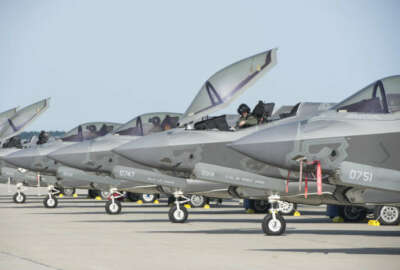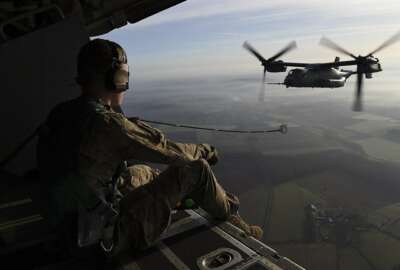Air Force pilot shortage may take decades to fix, but service is making headway
It may take 20 years or more before the Air Force has its pilot shortage situation back to where it is breaking even.
It may take 20 years or more before the Air Force has its pilot shortage situation back to where it is breaking even.
For years, the service has been operating at times with thousands fewer pilots than it needs, and the issue is one that will continue for the long haul, Maj. Gen. Albert Miller, Air Force director of training and readiness for operations, tells Federal News Network.
“The Air Force finds itself short about 1,650 pilots,” Miller said. “That’s an improvement over last year, where we were just over 1,900 pilots short. We see that as a positive for the Air Force, but there’s still a lot of work to be done to get us back to where we want to be.”
A majority of the shortage is with fighter pilots, where the service is down about 1,100 airmen.
But, the issue isn’t just about bringing in pilots to fill roles, it’s also about experience and the future makeup of the pilot force.
Miller says the largest gap is in less experienced, company grade officers — the pilots who spend most of their time in the air. That makes it so the Air Force has to take its more experienced, field grade officers and keep them in the sky or put them in lower positions.
“Today those field grade officers that would normally be doing staff jobs, working policy and those sorts of things are in the air,” Miller said. “We prioritize the line flying, so that the operational units are fully manned with the pilots that they need to carry out their operational missions. Those experienced field grade officers are not filling staff positions.”
The Air Force has even brought back retired pilots to help fill staff gaps.
The company grade shortage that the Air Force is dealing with now will eventually become a field grade shortage once those officers mature, even if the service can retain every single one, which is nearly impossible.
That means that in 10 years, when company grade pilots move to field grade, then the Air Force won’t have the luxury of being able to pull field grade officers from desks into the skies.
“One of our focus areas that we have a retention working group for is to focus on retention of as many of those company grade officers as we can, so that we minimize any potential shortage of future field grade officers,” Miller said. “One of the things that retention working group is really looking at hard is the aviator bonus program.”
Current bonuses are as high as $35,000 a year depending on the length of the contract the pilot signs and what aircraft they fly.
The Air Force is also working on quality-of-life issues like transparency in assignments and ensuring spouses can find work. During the beginning of the pandemic, the Air Force saw an increase in retention. However, Miller says now that private airlines are mostly back in full swing, the service is once again seeing pre-COVID attrition rates.
Part of what is driving the shortage is unfortunate planning by the Air Force in the past. While the service doesn’t have any lack of recruits, it doesn’t have the capability to train enough of them in time.
The Air Force said back in 2019 that its goal was to train 1,500 pilots a year by 2022. Miller says the service is not yet meeting that benchmark.
“It’s just going to take a year, two years to get to that point, because you can’t just flip a switch and get there,” he said. “Last fiscal year, Air Education and Training Command produced about 1,380 pilots, which was an increase over the previous year of about 120, so we are making advances.”
Copyright © 2025 Federal News Network. All rights reserved. This website is not intended for users located within the European Economic Area.
Scott Maucione is a defense reporter for Federal News Network and reports on human capital, workforce and the Defense Department at-large.
Follow @smaucioneWFED






